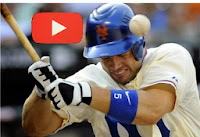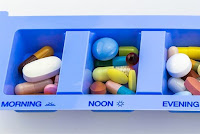An important study suggests that a history of concussion involving at least a momentary loss of consciousness may be related to the buildup of Alzheimer’s-associated plaques in the brain. The research is published in the online issue of Neurology®, the medical journal of the American Academy of Neurology.
<!– wp:html
“Interestingly, in people with a history of concussion, a difference in the amount of brain plaques was found only in those with memory and thinking problems, not in those who were cognitively normal,” said study author Michelle Mielke, PhD, with Mayo Clinic in Rochester, Minn.
For the study, people from Olmsted County in Minnesota were given brain scans; these included 448 people without any signs of memory problems and 141 people with memory and thinking problems called mild cognitive impairment. Participants, who were all age 70 or older, were also asked about whether they had ever experienced a brain injury that involved any loss of consciousness or memory.
Of the 448 people without any thinking or memory problems, 17 percent reported a brain injury and 18 percent of the 141 with memory and thinking difficulties reported a concussion or head trauma.
The study found no difference in any brain scan measures among the people without memory and thinking impairments, whether or not they had head trauma. However, people with memory and thinking impairments and a history of head trauma had levels of amyloid plaques an average of 18 percent higher than those with no head trauma history.
“Our results add merit to the idea that concussion and Alzheimer’s disease brain pathology may be related,” said Mielke. “However, the fact that we did not find a relationship in those without memory and thinking problems suggests that any association between head trauma and amyloid is complex.”
(The study was supported by the National Institutes of Health, the Robert Wood Johnson Foundation, the Alexander Family Alzheimer’s Disease Research Professorship, GE Healthcare, the Elsie and Marvin Dekelboum Family Foundation, the MN Partnership for Biotechnology and Medical Genomics and the Robert H. and Clarice Smith and Abigail van Buren Alzheimer’s Disease Research Program.)
Even Without Alzheimer’s, Blows to Head May Affect Brain, Learning and Memory
If concussions are connected to Alzheimer’s, what about more mild blows to the head? How careful should we be?
Key research suggests that even in the absence of a concussion, blows to the head during a single season of football or ice hockey may affect the brain’s white matter and cognition, or memory and thinking abilities. The study is published in the online issue ofNeurology®, the medical journal of the American Academy of Neurology. White matter is brain tissue that plays an important role in the speed of nerve signals.
“We found differences in the white matter of the brain in these college contact sport athletes compared to non-contact sport varsity athletes,” said study author Thomas W. McAllister, MD, of Indiana University School of Medicine in Indianapolis. “The degree of white matter change in the contact sport athletes was greater in those who performed more poorly than expected on tests of memory and learning, suggesting a possible link in some athletes between how hard/often they are hit, white matter changes, and cognition, or memory and thinking abilities.”
The work was completed while McAllister was with the Geisel School of Medicine at Dartmouth in Hanover, NH.
The study involved 80 concussion-free Division I NCAA Dartmouth College varsity football and ice hockey players who wore helmets that recorded the acceleration-time of the head following impact. They were compared to 79 non-contact sport athletes in activities such as track, crew and Nordic skiing. The players were assessed before and shortly after the season with brain scans and learning and memory tests.
The study found that a subgroup of both types of athletes performed worse than predicted on a test of verbal learning and memory at the end of the season. A total of 20 percent of the contact players and 11 percent of the non-contact athletes scored more than 1.5 standard deviations below the predicted score. McAllister said a decline this large would have been expected in less than seven percent of a normal population. This subgroup showed more change in the corpus callosum region of the brain than the athletes who scored as predicted on the test. The corpus callosum is a bundle of nerves that connects the right and left sides of the brain.
“This group of athletes with different susceptibility to repetitive head impacts raises the question of what underlying factors might account for the changes in learning and memory, and whether those effects are long-term or short-lived,” said McAllister.
MORE INFORMATION:
The study was supported by the National Institutes of Health and the National Operating Committee on Standards for Athletic Equipment.
To learn more about concussion, please visit www.aan.com/concussion.
To learn more about Alzheimer’s disease, please visit c/patients.
The American Academy of Neurology, an association of more than 26,000 neurologists and neuroscience professionals, is dedicated to promoting the highest quality patient-centered neurologic care. A neurologist is a doctor with specialized training in diagnosing, treating and managing disorders of the brain and nervous system such as Alzheimer’s disease, stroke, migraine, multiple sclerosis, concussion, Parkinson’s disease and epilepsy.











